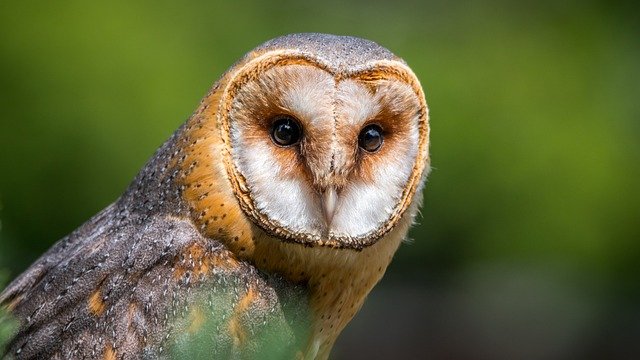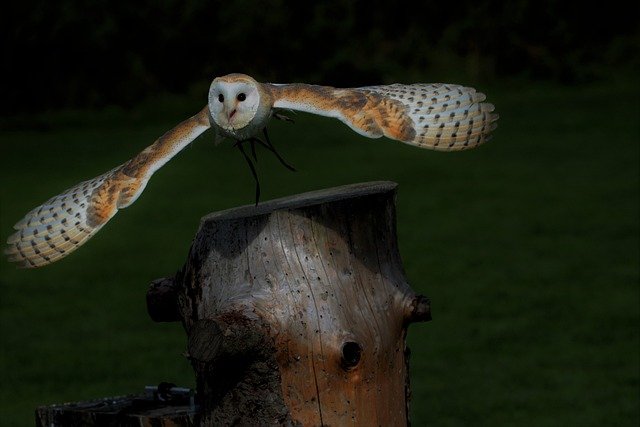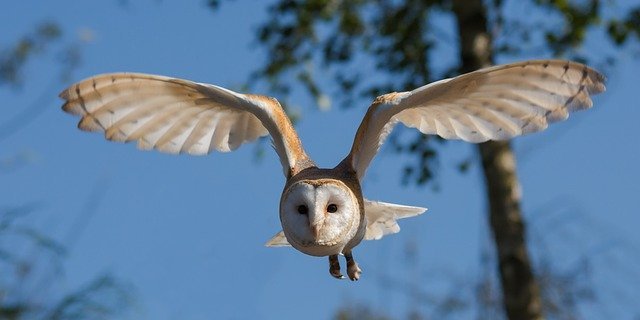All about Birds
The Barn Owl: A Species Profile
The barn owl is a bird that is interesting for many reasons. For one, they are nocturnal predators with excellent night vision and hearing. They are also very skilled at camouflage, which helps them to surprise their prey. In addition to these physical adaptations, barn owls have some unique behaviors that make them fascinating to watch. Here, we will take a closer look at the barn owl: what they look like, where they live, what they eat, and how they raise their young.
The barn owl is a nocturnal bird of prey

The barn owl, known as Tyto alba in scientific circles, is one of nature’s most remarkable birds of prey. Originally found throughout the temperate and tropical regions of the world. Barn owls can now be seen in North and South America, Europe, Asia, and Africa. This species is nocturnal, active mainly at night and tucked away into nests or burrows during the day. Barn owls have distinct markings, which make them highly distinguishable from other birds. Their feathers range from light white to a brownish-grey hue with spotted grey backs for camouflage. The front part of their body is almost entirely white, which works well to deceive their prey.
Additionally, barn owls are among the few species with asymmetrical ears (one ear is higher than the other). This helps them precisely triangulate sound to find food even in complete darkness! Apart from the occasional tree hollow or man-made cave, barn owls typically dwell in undisturbed areas such as grasslands and marshes near bodies of water where they can find a plentiful supply of food. Hence if you happen to find yourself near such a safe home, you may be lucky enough to spot these majestic creatures flying around looking for their next meal! All in all, the Barn Owl is an interesting bird that deserves protection due to its significant role as an important and perfectly adapted predator in many ecosystems around the globe.
The barn owl has a distinct appearance with its white face and black eyes

The barn owl is a truly extraordinary bird! Not only does it have all the features of birds, such as wings, tail feathers, and a beak, but it also has a majestic appearance, with its white face, black eyes, and distinctive golden-brown body. But more remarkable than its looks is its hunting ability. This nocturnal animal can locate prey in near darkness by using sound waves to pinpoint small creatures like mice, moles, and voles. To help them navigate in the dark, barn owls also have large eyes and a flat facial disc that amplifies sound waves.
The barn owl is a very effective hunter, preying on small mammals such as rodents

The barn owl is a remarkable creature, most easily recognized by its distinctive white face and heart-shaped facial disc. It’s an efficient hunter, preying mainly on small rodents like mice, voles, and shrews – typically anywhere from 30 to 60 of them each night. But diet isn’t the only thing that makes the barn owl an effective predator. It’s also endowed with remarkable physical capabilities such as efficient digging claws for grabbing prey, rough surfaces on its wings that muffle sound during flight, and incredibly acute hearing.
The sounds emitted by their prey are amplified via the asymmetrical shape of their ears. While the tufts of feathers around their eyes help to block out excess noise or light so they can better focus on noise from below. All these features work together to create an agile and stealthy hunter that can survive on a diet of mostly rodents. Amazingly, just one pair of owls can eat over 4000 rodents in a breeding season.
These features allow the barn owl to effectively hunt efficiently despite its comparatively small size compared to other predators. Making it a very successful species when preying upon small mammals like rodents. Thus, not only is the diet of this species key in ensuring its survival. But so are its many physical adaptations for hunting, making them such successful hunters today.
The barn owl is threatened by habitat loss and pesticide use

The iconic barn owl is a beloved sight to many people worldwide, but its population numbers rapidly decline in some areas. One of the reasons why these birds are becoming more threatened is habitat loss. When humans encroach upon their natural habitats, barn owls struggle to find new homes and often lose their nesting places altogether. Furthermore, increased pesticide use has also devastatingly affected their populations in some areas.
These chemicals make it difficult for barn owls to find food or reproduce successfully. As they often contaminate their prey or eggs. Unfortunately, if effective measures are not taken soon, many of these creatures will no longer be seen soaring through the skies anytime soon. As such, we all must do our part to protect barn owl habitats from being destroyed. And help limit our use of pesticides so that we can continue to enjoy these birds for generations to come.
Several ways to help protect the barn owl population

The barn owl is a beautiful bird with an important role in the ecosystem. Thanks to their keen hearing and superior vision, they are natural predators of rodents, mice, and insects. Unfortunately, due to development, climate change, and misuse of pesticides, their population has been decreasing for years. Fortunately, there are steps we can take to help protect these types of birds.
One way is to create artificial nesting boxes or other types of bird nests which have been shown to attract barn owls and increase nesting success rates. Additionally, avoiding or limiting the use of pesticides can make a significant difference in the number of rodents available as food sources for barn owls.
Finally, we should research how our behavior might impact the environment. Such as cutting down trees where birds might want to nest. And work towards making more sustainable choices whenever possible. With the right knowledge and effort behind us, we can all do our part to help healthy barn owl populations thrive again.
While the barn owl may not be a household name, it is an interesting and important bird that deserves our attention. The barn owl is threatened by habitat loss and pesticide use. So we must do what we can to help protect this species. There are several ways you can help, including creating nest boxes and avoiding pesticides. If you want to learn more about how you can help protect the barn owl population, please check out our other blog posts. We have information on various bird species, so there’s something for everyone!

